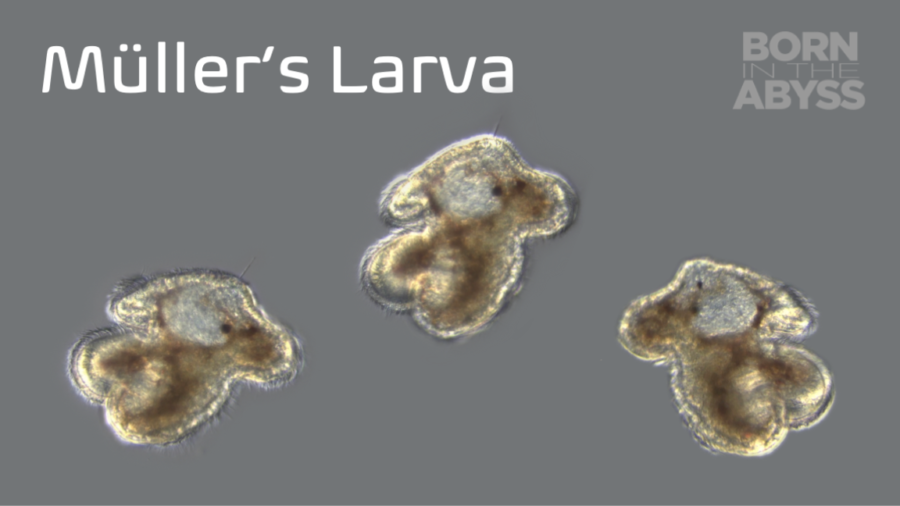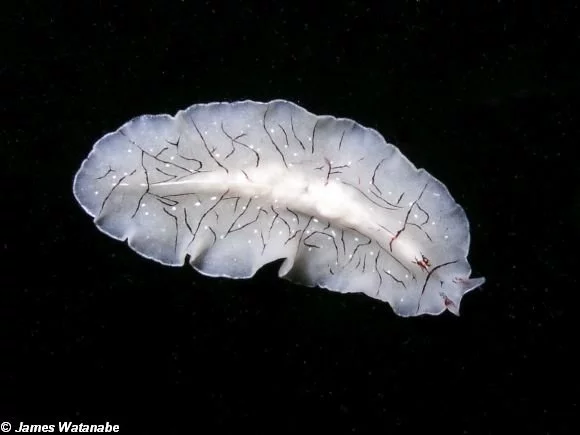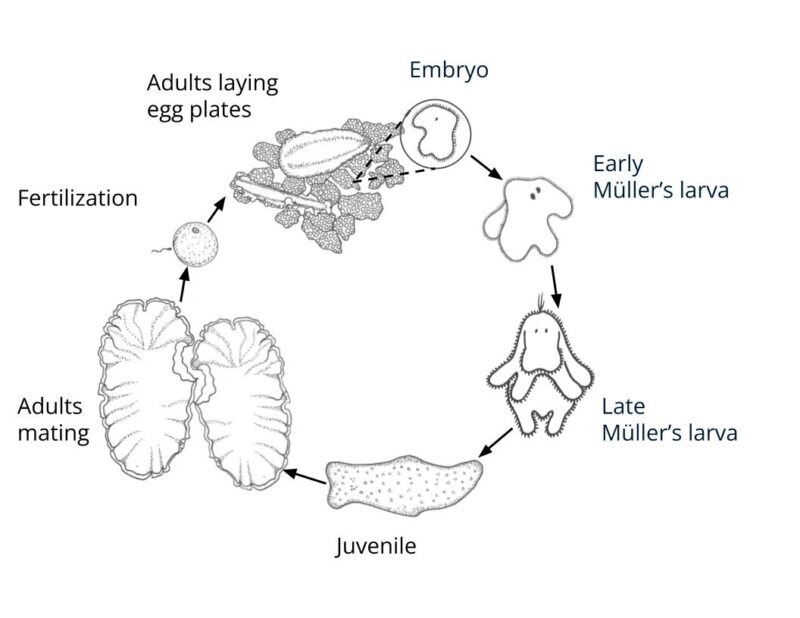
Müller's Larva
Named after Johannes Müller, a German scientist who first described this larval form
Parents: Flatworms
Food: Microscopic algae called phytoplankton
Size: About 500 microns tall = 0.5 millimeters = 0.02 inches

Photo of an adult flatworm by James Watanabe and Standford SeaNet.
Larval Form and Function
Watch this compilation video to learn more about the movement, anatomy, and feeding of a Müller’s larva.
Life Cycle of a Flatworm

Drawn by Nadia Stoker
- The Müller’s larva is only seen in some flatworms.
- Adult flatworms are often hermaphroditic meaning each individual can produce both eggs and sperm.
- Fertilization is internal and both adults can then lay eggs that hatch as Müller’s larvae.
- Müller’s larvae feed on microscopic algae called phytoplankton for about 2 weeks after hatching before settling into their juvenile form on the seafloor.
- These larvae resemble tiny teddy bears that grow more arms and legs (larval lobes) as they grow.
Larval Quest Activity
Developed by Nadia Stoker and Caitlin Plowman as outreach and education materials accompanying the Born in the Abyss film.
The Stephen Low Company
Oregon Institute of Marine Biology, University of Oregon
National Science Foundation

